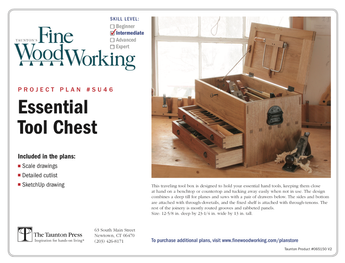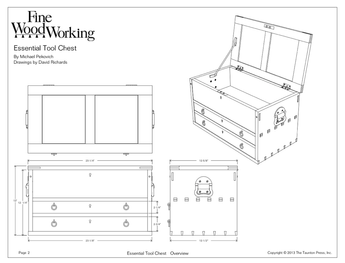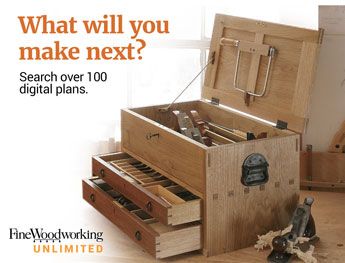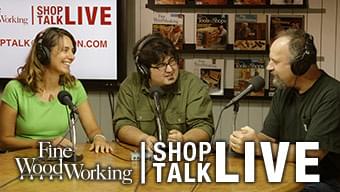To All,
Any tips will be appreciated. Saw leaves burn marks on the ripped edge of the piece between the rip fence and blade, but not on the waste piece.
Short account- pm 66 cab saw. I have replaced the factory fence faces with mdf to get a smoother and flatter fence. I have tested and aligned the mitre slots to blade and blade to fence, and blade to rip fence. My rip fence when testing with a dial caliper, starts at .000 and ends at .002, however it does go to .003 at certain points along the fence, could this .001 cause the burning. I set the fence to cant at the outfeed, I set it dead on, and both ways still burn. I tried maple, red oak and they both burned. I also tried mdf, with no burn. I tested my blade. A Forrest WWII, and that was .002 out accross the blade. Is that too much? Sparkling clean blade, cleaned and lubed trunions, hoping when I was done, it would have magically fixed itself. This just started happening recently, so I went through all of the above to no avail!
Any sugestions?
thanks Joe P















Replies
not twisting the board as you push through
Dear Joe,
I have the same saw. I can only think of a couple of reasons why you would be "burning", all of a sudden. Anytime I have had that happen, it is the back edge of the blade that is the culprit. Let's start simple. I would suggest the following:
1) Replace the MDF with "ultra high molecular plastic". If not that then plywood. My guess is that the MDF is the bad boy. Stable, to a point, it does absorb moisture like a sponge, (humidity included), a little swell is all it would take.
2) Use a splitter. I don't, but I should.
Best,
John
Joe, exactly how did you check the blade alignment with the miterways? Did you need to make adjustments to the saw for the alignment. Did the saw have any problems in the past? When things stop working right, I retrace my steps to see what I messed up. The MDF face on the fence won't have any effect. Over the length of the fence, it should toe out on the outfeed side a light 1/64", measured at the ends of the miterways, not the blade. You get an easier to see alignment of the blade with the miterways if you place a long straight edge against the blade body and measure from that. Any slight difference will show up better over the longer distance. You also have to be careful when re-tightening the table bolts. At times they can pull as they snug up.
Your blade is likely stressed and you should start with a new, sharp rip blade. You will have trouble with hard maple even under the best conditions if you are doing any significant ripping. Combination blades are a compromise and great for all around work but not well suited to ripping any amount of hardwood. Get a good rip blade, it will save the Woodworker for the work it does best.
Beat it to fit / Paint it to match
Hammer,
i only ran the dial indicator clamped to my mitre guage the length of the blade fully raised. Tonight, I will add a straight edge to the blade, and see how that goes. I have not needed to adjust the talbe top, per my readings so far seem to be acceptable.
My fence does toe out .002. Reading was taken at the end of the mitre way, same procedure as above.
I am also gonna pick up a new combo blade tonight. I need a backup anyway and test that also.
I am concerned because I am only ripping test pieces in a couple of species, and the test pieces are only 1 ft long. Its leaving a fair amount of burn, causing considerble extra work. It seems this problem has just crept up as of late. Im thinking I must have knocked something out of true when I roll it around.
Can you expand upon a stressed blade and how it happens. The WW II has not logged many hours. Under 10 hrs def, and still very, very sharp?
thanks for the tips. Let you know the results.
Hi Joe,
By a stressed blade, I just mean it has been used and used in a situation where you have had problems. Although the tips may feel sharp to you, there can be more wear on one side. It's not unusual for a dull blade to be the cause of burning. You need a few to keep in rotation with the sharpening service. I'd recommend having both a rip blade and a fine crosscut in addition to a combination blade. A few industrial level, full body blades will last you many years and give superb cuts. Just like tuning a car, all the various components should be in top condition when checking your saw.A couple of things are brought to mind reading this latest post. If you try to check the cut by just taking off a small amount, one side of the blade will be against the solid wood while the other has almost no resistance. It's not uncommon for a blade to wander slightly with skim cuts. This can dull one side more than the other and give an uneven cut, especially with thin kerf blades. I like to take a 1/2" bite just so the blade doesn't get lazy. I'd be very cautious ripping 12" pieces of wood. 24" minimum would be better for checking set up and safer to handle. Feed at a normal rate, don't over do it trying to be too precise.One thing that doesn't always get mentioned is over tightening the blade nut. This can also distort a blade, very little torque is needed for an arbor nut. When you make very precise measurements to the blade, you should use one tooth as your reference and rotate it to the front and back.Beat it to fit / Paint it to match
i think your problem is too slow of a feed rate. You have to keep pressure on the in-feed side but not to much that you are forcing the wood thru but enough to let the saw and blade to cut and fed itself. You will know when the feed is right as the wood will cut easy regardless of what wood you are cutting.
Also if you are using a feather-board it maybe to tight against the piece as you feed it. normally this will cause burn on the waste piece or pushes the fence away from the blade.
Dave in Pa.
Dave,
Tried varreying my feed rate several times to no avail. Test done with push block and no feather board.
Now I,m looking at the blade as a suspect. Stay tuned..
Joe P
your description of yer dial indicator readings sounds to me like the fence is angled towards the blade at the back, not the "toe-out" you describe.
If the fence was angled away from the blade, the dial indicator should be going backwards.... like to .998
Just a thought
Eric
Check my TS TuneUp page at my website http://www.rexmill.com
If you blade is not square to the fence is the most common problem..
Hi Joe - A couple of questions....how thick is the material? How's the arbor and belt tension? Have you tried another blade? Is this a new development?
Regardless, you might try raising the height a bit and see if that helps. A blade like the WWII has very tight side clearance which is one aspect that gives a more polished edge. The downside is that small aberrations with other elements of the cutting system makes it more sensitive to things like burning.
From time to time I clean my blades with oven cleaner or lye. It cleans the wood material stuck on the blade. The difference is amazing.
To get good rip cuts the saw blade must be parallel to the fence. To get good crosscuts the blade must be parallel to the groove in the table top.
Edited 8/19/2006 2:44 pm by gb93433
This forum post is now archived. Commenting has been disabled